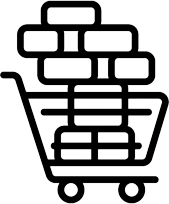
OUR MOTO
“Crafting Sound, Inspiring Peace.”
At Rana Singing Bowl, our mission goes beyond creating instruments — we craft tools for transformation. With every bowl we make, we aim to promote healing, harmony, and mindfulness, connecting people around the world through the ancient power of sound.
Company Profile
Precision, Purity, and Peace – The Essence of Our Craft
Rana Singing Bowl centre – Crafting Sound, Healing the World
Rooted in Himalayan tradition and guided by a passion for quality and wellness, Rana Singing Bowl Centre is a trusted manufacturer, exporter, and supplier of handcrafted singing bowls, gongs, bells, tingshas, crystal singing bowls, and other spiritual sound instruments.
Based in India, we specialize in blending ancient artisan techniques with modern wellness practices, offering instruments that resonate with spiritual seekers, yoga practitioners, healers, and sound therapists around the world.
Each item is carefully handcrafted by skilled artisans using a special bronze alloy, celebrated for its deep, resonant sound and lasting durability. Whether used for meditation, yoga, sound therapy, or spiritual rituals, our instruments are designed to promote inner peace, energetic balance, and holistic well-being.
What We Offer
-
Premium Tibetan & Himalayan Singing Bowls
Made with care for meditation, healing, and spiritual practices. -
Chakra-Aligned, Engraved, Lingam & Jhumka Bowls
Available in a wide variety of traditional and modern styles. -
Gongs, Dorje & Bells, Tingshas, Crystal Singing Bowls & Musical Instruments
A complete range of authentic spiritual sound tools. -
Custom Sizes, Finishes & Personalized Branding
Tailored products with logo engraving and design customizations. -
Global Shipping & Bulk Supply
Serving wellness brands, yoga studios, and practitioners worldwide.




Company Factsheet
Where Tradition Meets Innovation in Sound Healing




















